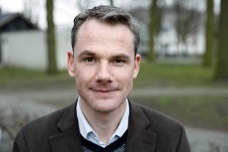The Netherlands went into ‘partial lockdown’ on Wednesday evening. It may last until December.
That’s according to the Dutch Health Department’s (RIVM), Jaap van Dissel. He told the national broadcaster, NOS, that he expects a more prolonged period “in which the numbers will increase”. The infection figures will first increase even further before a possible decrease follows, he predicts.
Van Dissel, therefore, doesn’t think the new anti-corona measure can be relaxed after only four weeks. Van Dissel is head of infectious disease control at the RIVM. He, and Jacco Wallinga, discussed the new measures in an interview with NOS.
Wallinga is responsible for the RIVM’s calculation models. They don’t think the cabinet should have taken strict measures earlier. But they do feel the steps are necessary now.
‘Can’t run that risk’
“In the worst-case scenario, earlier measures will prove to be ineffective after all. You just can’t run that risk,” says Wallinga. The first measures were announced at the end of September, but the number of infection are still climbing.
“We calculated the best and worst-case scenarios,” says Wallinga. “The ICU stats show it’s probably somewhere in between. So, the measures work, but not as well as expected.”
Movement data also shows that “people did adjust their behaviour, but not as we saw before. Quite a lot has changed in terms of testing capacity too. It’s now been expanded again.”
Stable indicator
“As a result, you can’t just translate an increase or decrease in the number of positive tests one-on-one into what happens with infections. The ICU records are a very stable indicator.”
There has been a lot of criticism over the past few weeks about the government’s late action. Prime Minister Mark Rutte acknowledged in the Lower House that the measures taken in September could have been more robust. These were taken on the advice of the Outbreak Management Team (OMT).
Those steps focused mainly on people’s behaviour. The most recent measures are less dependent on that. But, why didn’t the OMT already advise a partial lockdown in September?

‘Back to June’
Wallinga: “Our advice was to go back to the situation at the beginning of June,” says Jacco. “But what you don’t know is how people will react. You can’t predict that you have to see what they do.”
“Now that that’s the case, you get a stricter package of measures.” Why, with all that’s been learned, would it not have been better to take the current measures a few weeks ago? “We advise taking measures that we’ve learned are effective.”
“Exactly how effective can’t be estimated in advance. We give our best estimate. We could have advised much firmer measures, but you don’t know how that’ll work out. And with the learned knowledge, what we advised at the end of September was proportionally appropriate.”
Haven’t lost sight of COVID-19
Jaap van Dissel, however, doesn’t believe the Netherlands has lost sight of the virus. Even though, according to NOS, only 17% of infections can be traced back to their source. “You can take concrete measures, based on source and contact research,” he admits.
“If that’s no longer possible because the pressure is too high, you have to switch to more generic measures. And that’s what happened. In that sense, we have the virus well in our sights.”
“We’re measuring whether it is increasing and the derived parameters. But of course, you’d like to get back to a situation in which you can react to specific hotbeds as quickly as possible. But, the spread is such that you have to fight the outbreak with more generic measures,” says Van Dissel.
No less risk
There are relatively fewer people in intensive care compared to the first wave. ICU stays are also slightly shorter. Despite that, the Dutch Lower House has said the Netherlands shouldn’t consider itself lucky. “We know that in the first wave, it was mainly the older age groups who were in hospitals and ICUs.”
“Elderly people are now aware of the spread of the virus to some extent,” explains Van Dissel. “They’ve begun to isolate themselves. Partly as a result of this, there are more young people [in hospitals].”
“Of course, there’s always the risk that older people will be affected more. That’s if the virus increases in the middle age groups. And that could, therefore, mean this is a harbinger of more stress in hospitals and intensive care units.”
Know better
“People are more aware of how to deal with the sick. Also, in nursing homes. We have also learned how to deal more consciously with tests and with protective measures. And everyone is more aware of the risks,” says the RIVM head.
“And then you hope that this eventually translates into better protection for the vulnerable. That too, of course, is ultimately in everyone’s own hands. “When asked what the chances that the recently announced measures will be relaxed in four weeks, Van Dissel says, “First you want to see that there’s an effect on the number of infections.”
“And that we are on a downward trend. We’re going to see that in the coming weeks. That will happen sooner or later. It all depends on well people have stuck to the rules announced on 28 September.” He says that might only happen in December.
Source: NOS
Translator: Melinda Walraven
















